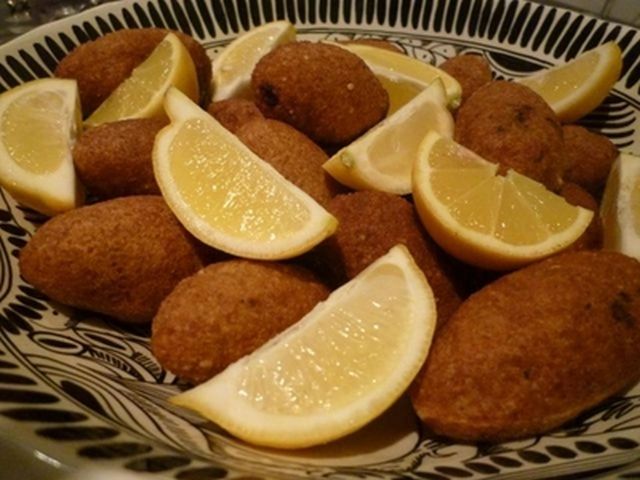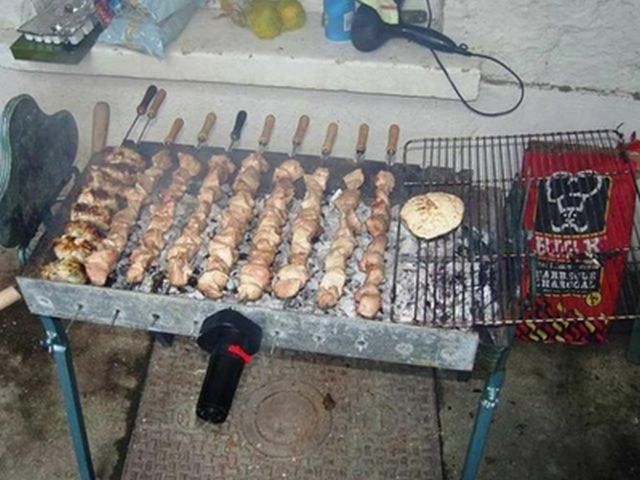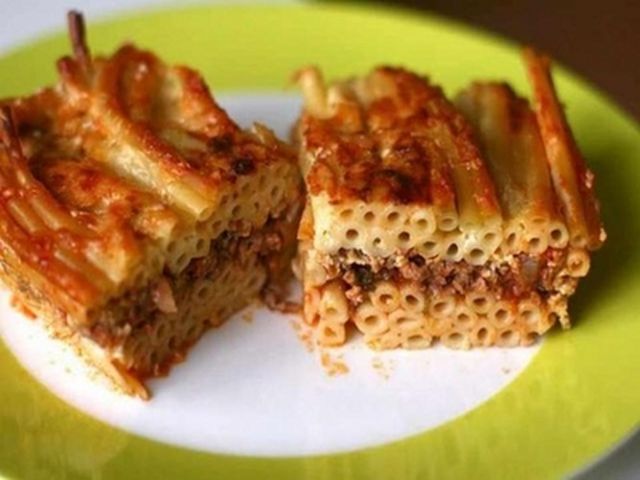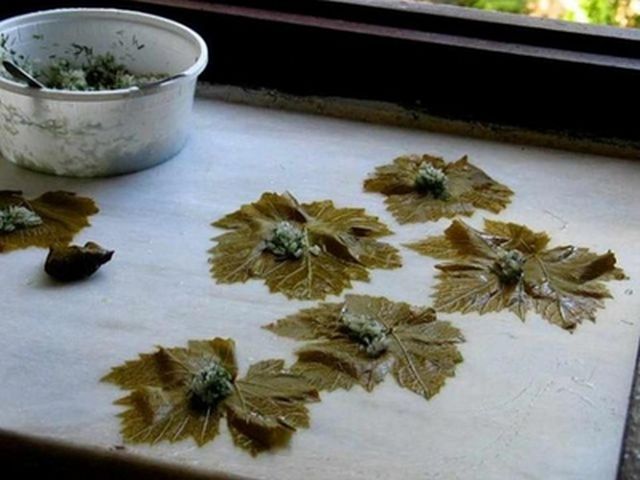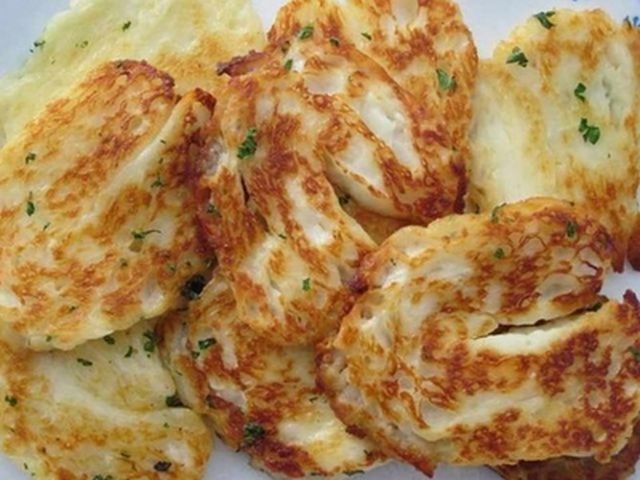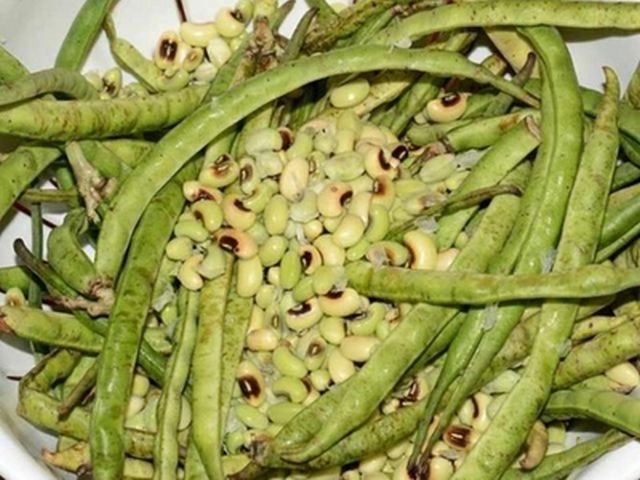A Traditional Romanian Food: Cabbage Rolls
In order to make cabbage rolls we need the following ingredients: 1 large soured cabbage, 750 g ground meat (it is recommended a mixture of pork and beef), 2 large onions, 2 tablespoons rice, 2 tomatoes or 500 ml tomato sauce, salt, pepper, sweet paprika and sour cream (optionally). Grind the meat with a raw onion. Place in a bowl and mix with rice, pepper, salt, paprika, and finely chopped onion. Mix everything well. Core the cabbage with a sharp thin knife. Carefully remove the cabbage leaves, one by one, so that they do not tear. Cut larger leaves in 2 or 3 and then place a little meat in each cabbage piece and roll in. The smaller the rolls are, the tastier they certainly are. Place a layer of rolls in the pan (take a deep one for that), then cover with a layer of chopped (julienned) cabbage and the bay leaves, then a layer of thinly sliced tomatoes. Do this layering until all the rolls are really made. The last layer must be tomato slices and add after that tomato sauce. Then place everything in the oven so that the liquid is reduced. Serve the cabbage rolls when they are hot with some sour cream. Instead of cabbage, vine leaves are still able to be used. Their arrangement on a plate or in a saucepan can be a true art.
Emilia Dragomir, teacher, "Constantin Noica" Theoretical High School Sibiu
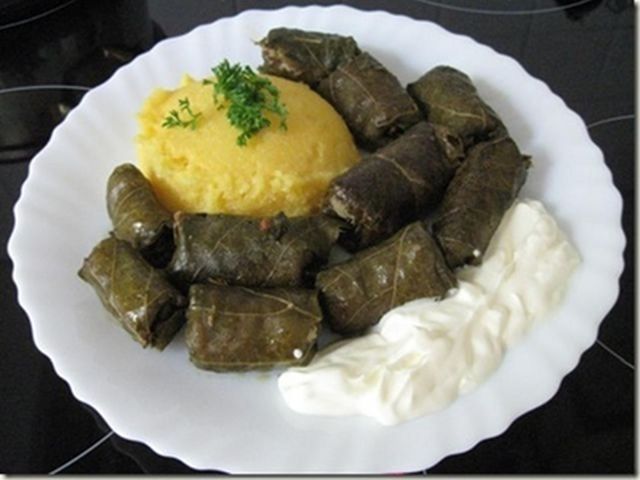

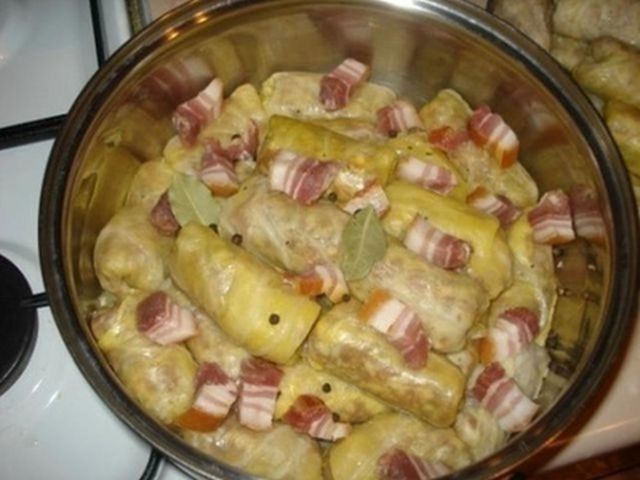
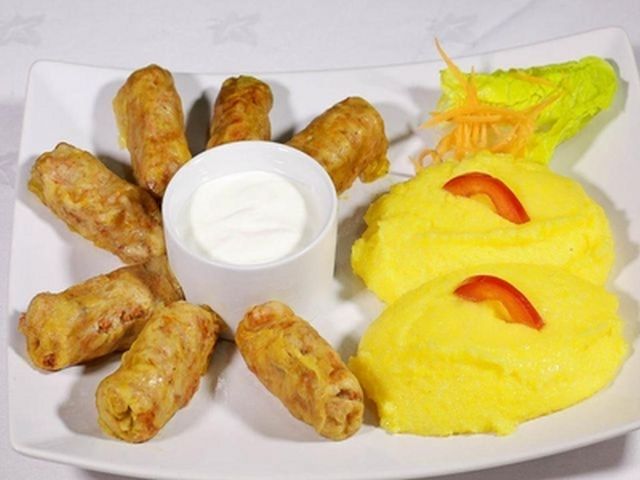
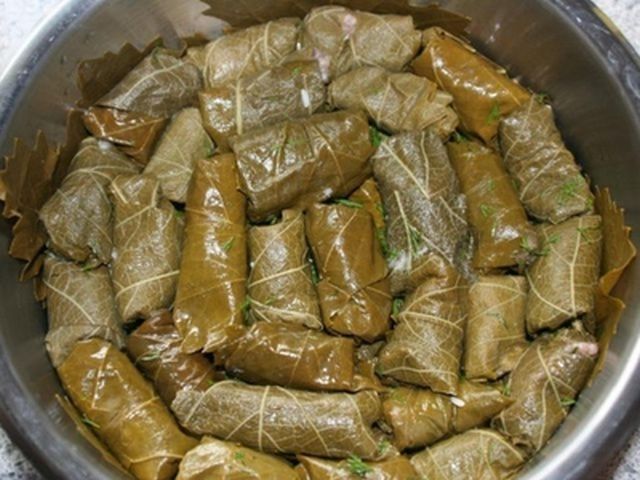
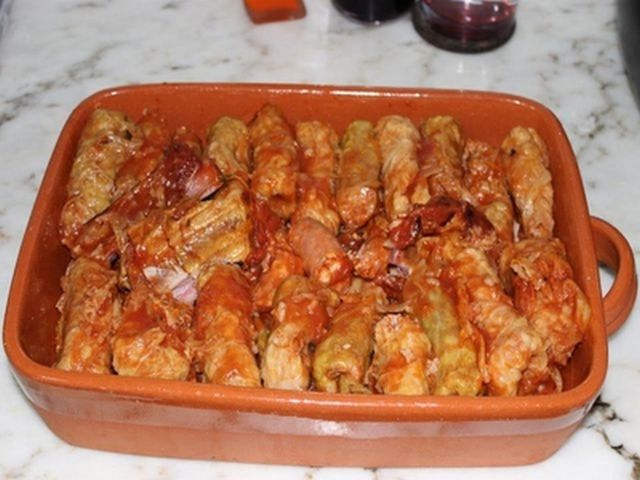
O mâncare tradițională românească: Sarmale
Pentru a face sarmale avem nevoie de următoarele ingrediente: 1 varză mare murată, 750 g carne tocată (este recomandat un amestec de carne de porc și de vită), 2 cepe mari, 2 linguri de orez, 2 roșii sau 500 ml sos de tomate, sare, piper, boia dulce și smântână (opțional). Se macină carnea cu o ceapă crudă. Se pune într-un castron și se amestecă cu orez, piper, sare, boia de ardei și ceapă tocată mărunt. Se amestecă totul bine. Se scoate miezul verzei cu un cuțit ascuțit subțire. Se îndepărtează cu grijă frunzele de varză, una câte una, astfel încât acestea să nu se rupă. Se taie frunzele mai mari, în 2 sau 3, și apoi se pune un pic de carne în fiecare bucată de varză și se rulează. Cu cât sarmalele sunt mai mici, cu atât sunt mai gustoase. Se pune un strat de sarmale în tigaie (se ia una adâncă), apoi se acoperă cu un strat de varză tocată și foile de dafin, apoi un strat de roșii felii subțiri. Stratificarea se face astfel până când sunt făcute toate sarmalele. Ultimul strat trebuie să fie de felii de roșii și se adaugă sosul de roșii. Se pun apoi în cuptor, astfel încât lichidul este redus. Se servește fierbinte, cu smântână. În loc de varză pot fi folosite foi de viță. Dispunerea lor pe o farfurie sau într-o cratiță poate fi o adevărată artă.
Mădălina Sporiș, profesor, Liceul Teoretic "Constantin Noica" Sibiu
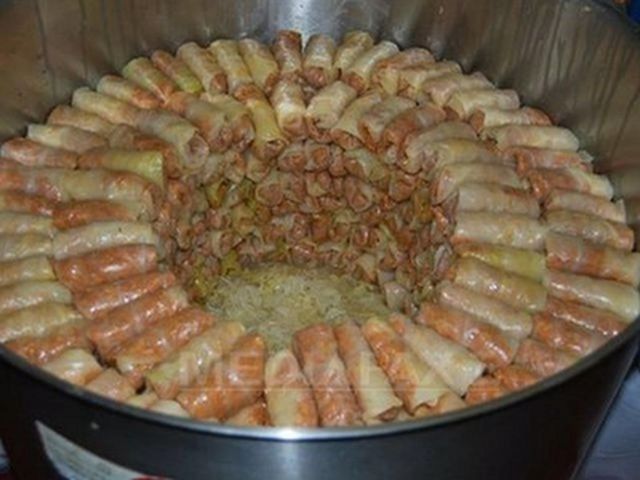
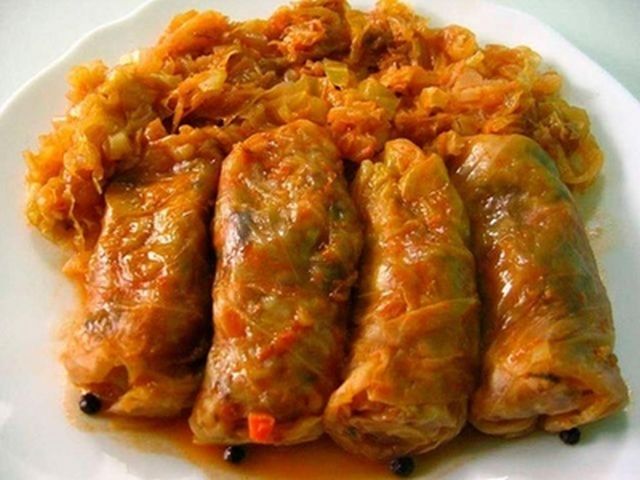
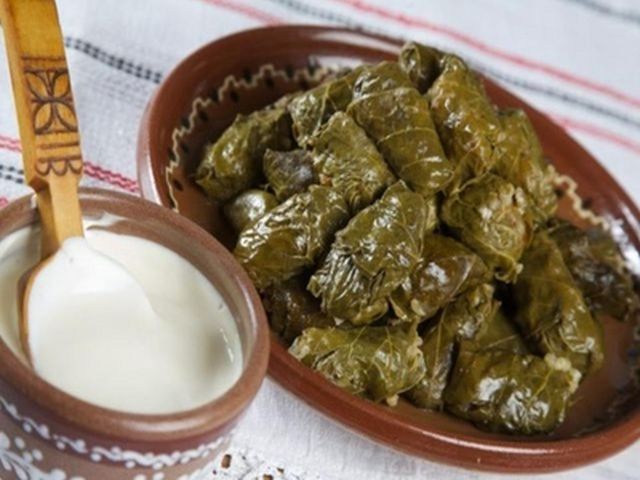
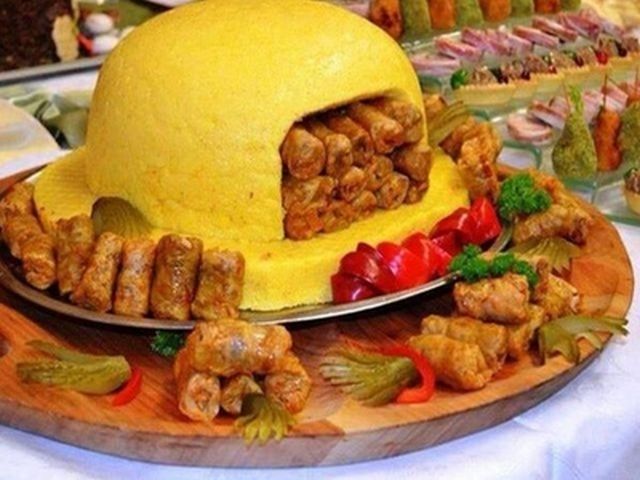
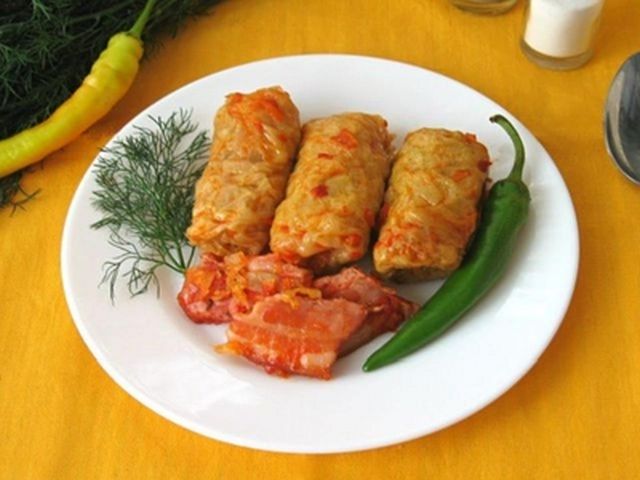
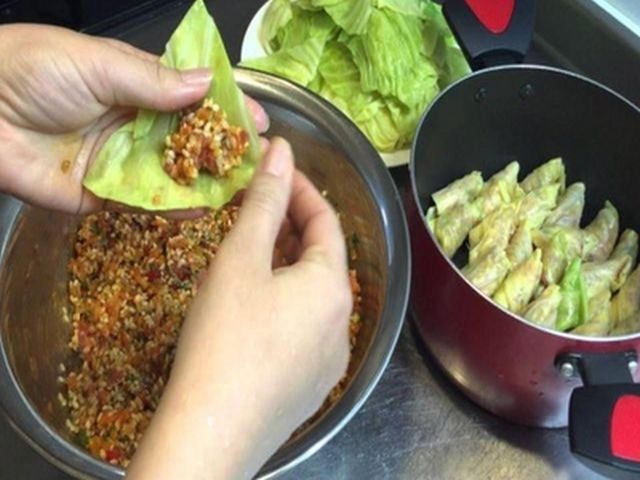
WATER PATTY
In order to prepare water patty, one needs 8 water glass flour, 5 eggs, 1 tea spoons salt, warm water, half a pound of cheese, half a bunch parsley, and oil. Flour,eggs,salt and with warm water kneaded a bit stiff dough.Thoroughly kneaded dough for half an hour rest. After 9 is equal glands done. These glands a bit thick pop-up 7 sheet of dough where clean laid separately. The remaining 2 sheet of dough one well-oiled big round a tray laid. Other sheet of dough for the latest up 4 folding put aside. In the meantime big a pot water filled boil and put a little salt. In a pot filled with cold water. Mild dry sheet of dough one by one ago hot water after removed taken cold water is taken. Drain excess water and the tray is laid. on each sheet of dough sprinkled with a little oil. Fourth sheet of dough cheese and a mixture of finely chopped parsley,is placed on an equal basis. Finishing the prcess in this way uppermost allocated sheet of dough boiled laid. on the stove cooked on each side of the equal. After turn with the aid of a tray pastty put a little more oil in the tray and cooked in the same manner.
Enes Bulut, pupil, Vali Mehmet Lutfullah Bilgin Ortaokulu
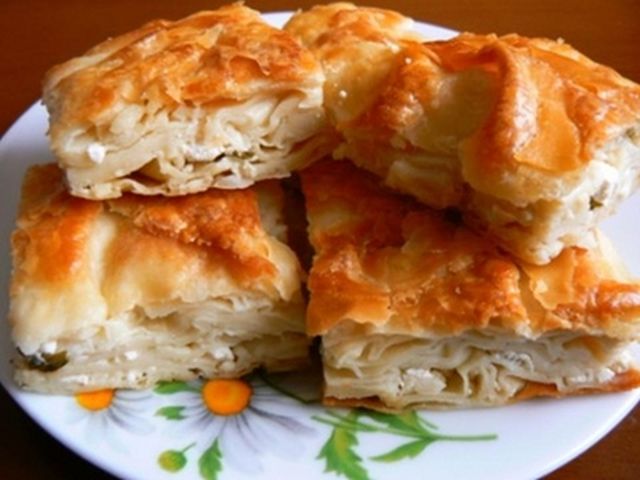
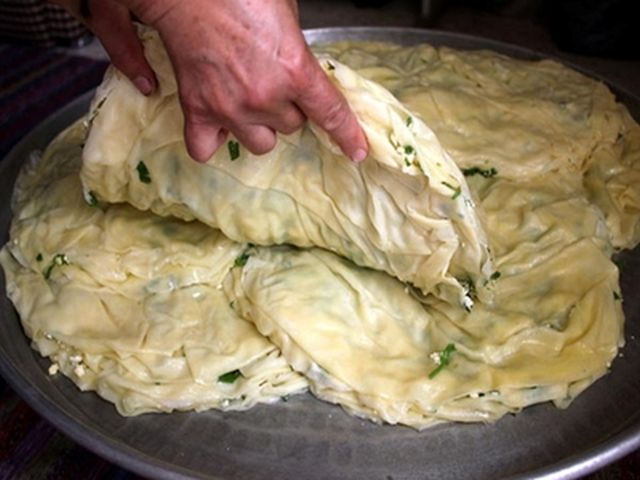
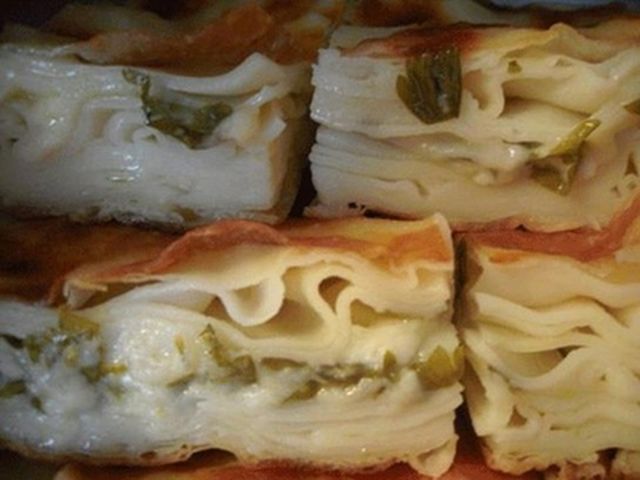
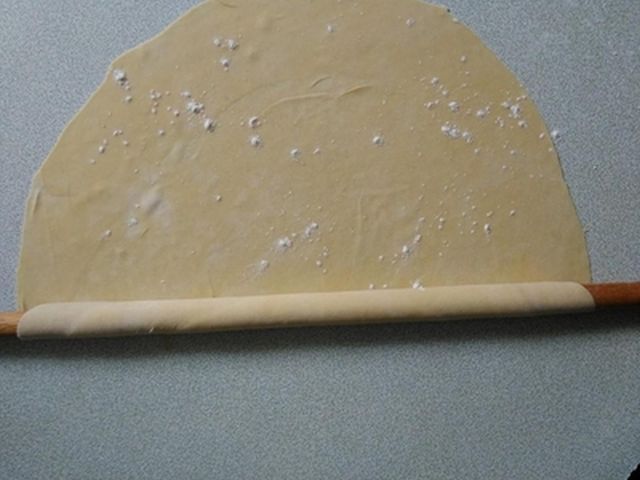
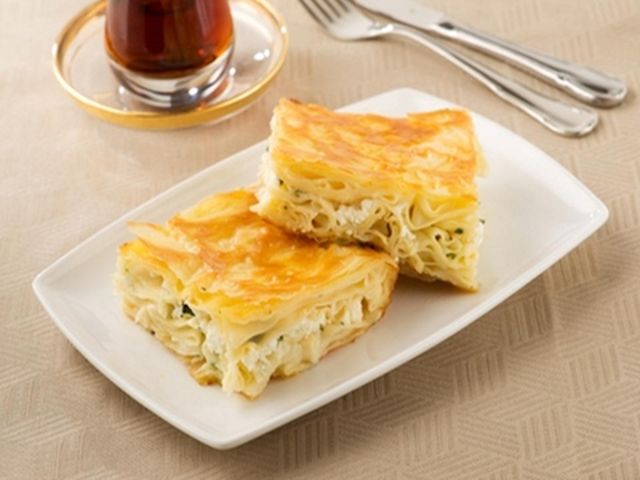
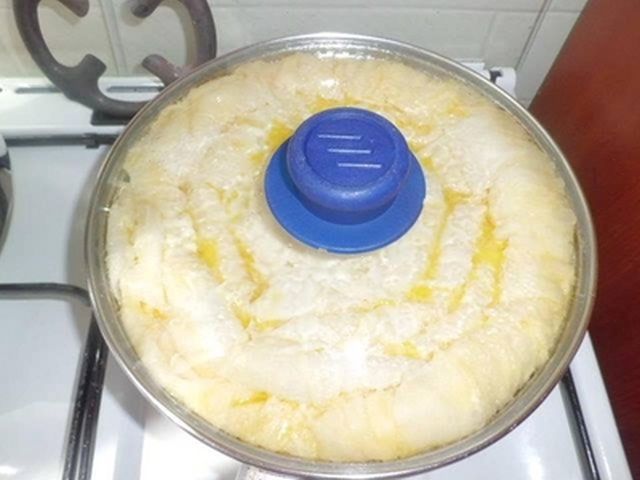
SU BÖREĞİ
Su böreği için; 8 su bardağı un, 5 yumurta, 1 çay kaşığı tuz, bir miktar ılık su, yarım kg peynir, yarım demet maydanoz ve sıvı yağa ihtiyaç vardır. Un, yumurta, tuz ve ılık suyla biraz sert bir hamur yoğrulur. İyice yoğrulan hamur yarım saat kadar dinlendirilir. Sonra 9 eşit beze yapılır. Bu bezeler biraz kalın açılır. Açılan 7 yufka temiz bir yere ayrı ayrı serilir, Kalan 2 yufkanın biri iyice yağlanmış büyük yuvarlak bir tepsiye serilir. Diğer yufka en son üstü için 4’e katlanıp bir kenara konur. Bu arada büyük bir tencereye su doldurulup kaynatılır ve biraz tuz atılır, Bir tencereye de soğuk su doldurulur. Hafif kurumuş 7 yufka teker teker önce sıcak suya atılır sonra kevgirle çıkarılıp soğuk suya alınır, fazla suyu süzdürülüp tepsiye döşenir. Her yufkanın üzerine biraz yağ serpilir. 4.yufkada peynir ve ince kıyılmış maydanoz karışımı eşit bir şekilde konur. Bu şekilde işlemi bitirip en üstte ayrılan yufka haşlanmadan serilir. Ocağın üstünde eşit olarak her yeri pişirilir sonra bir tepsi yardımıyla börek çevrilir. Tepsiye biraz daha yağ konur ve aynı şekilde pişirilir.
Asli Selin Vatan, öğrenci, Vali Mehmet Lutfullah Bilgin Ortaokulu
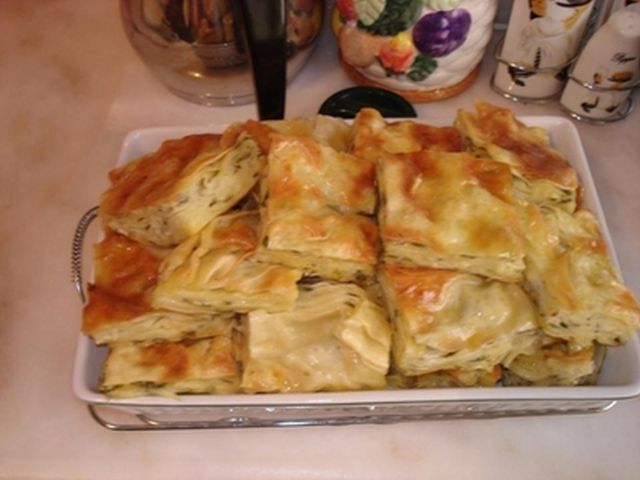
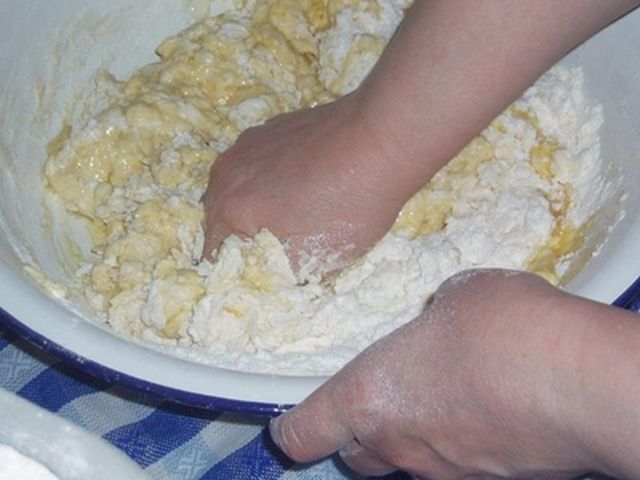
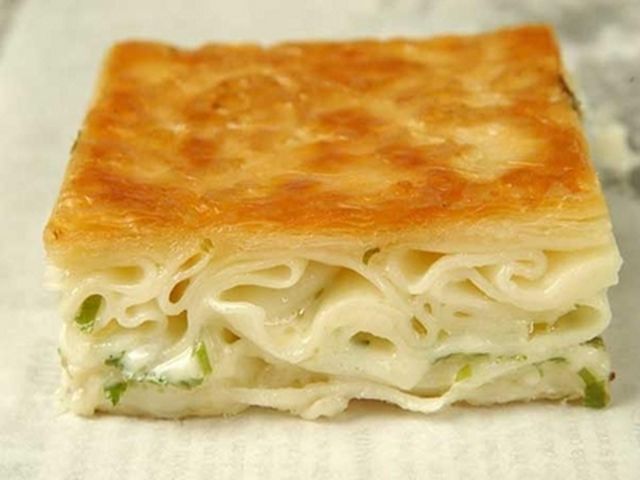
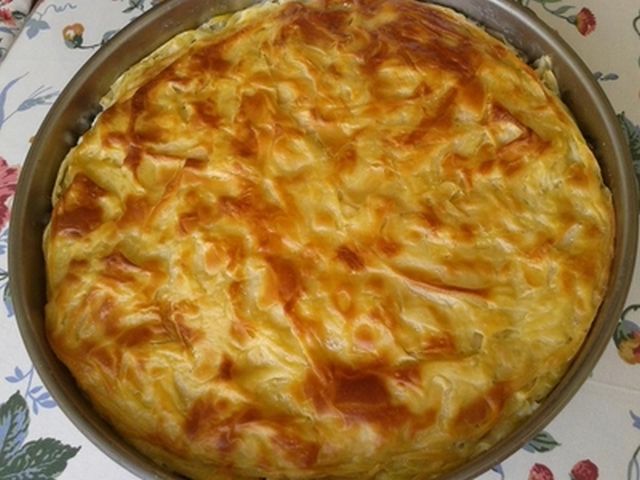
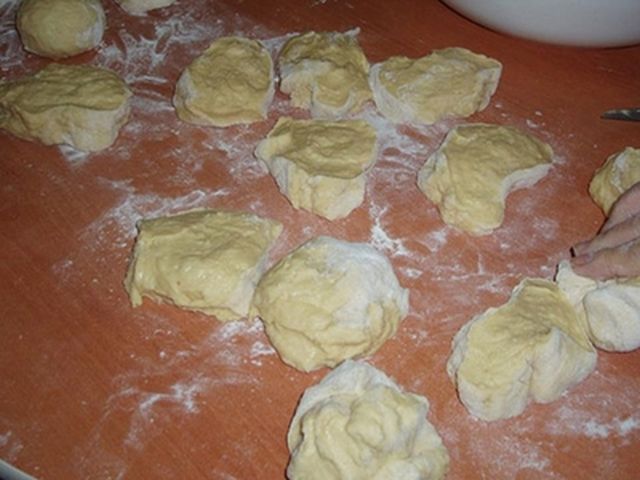
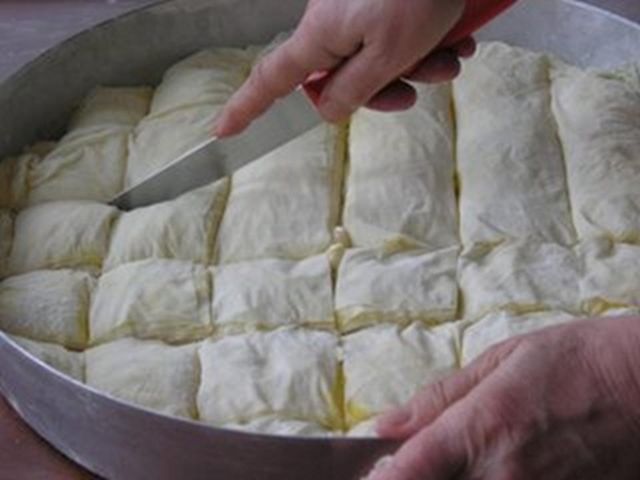
The Most Famous Cypriot Dishes
Probably the most famous Cypriot dish, the popularity of Halloumi is extending nowadays to mseveral countries throughout Europe and, surely, in the Middle East. Because of the cheese’s high melting point, Halloumi possesses even the so rare ability to be easily fried or to be grilled, completely redefining the expectations of what we obviously call in our country ”grilled cheese”. Distinguishable by its mild salty flavor and rubbery texture, the delicacy of Halloumi has become a favourite one not only among vegetarians but also among those people who are non-vegetarians all around the entire world. The cheese is thus produced by combining a mixture of goat and sheep milk before then being set with rennet. This is in fact an unusual practice due to the absence of acid-producing bacteria in any part of the process. In the same time, we can say that Halloumi is able to be served cold alongside freshly sliced watermelon, and this dish is commonly eaten as an appetizer or even as a dessert in Cyprus island. In addition, the Cypriot variety of the Dolma uses minced meat, rice, onions, tomatoes and a mixture of herbs. This filling which is then carefully wrapped certainly in fresh vine leaves. Besides, this dish can be found commonly throughout Greece, Turkey and we can state even the Middle East. Koupepia are usually made in large batches and are able to be frozen and to be enjoyed at a later time. The stuffing of vegetables is a Cypriot tradition along the ages which extends beyond vine leaves, with peppers, tomatoes, onions, courgettes and even courgette flowers often being cooked in this manner. A spin-off from the famous Greek fast food dish, the Cypriot style souvlaki consists of small chunks of charcoal-grilled meat on a skewer, and a large amount of fresh salad filling. The pita bread used in Cyprus is thinner and larger than the Greek version, and usually contains a pocket to hold the ingredients, rather than wrapping the filling in the traditional way. The meat is commonly pork, lamb or chicken. However, vegetarian options such as mushroom and halloumi are also sought after choices. The sauces popular with Greek souvlakis are a rare feature of the Cypriot version. On the Cypriot island they are instead commonly served with lemon quarters, a pickled green chili pepper and, of course, piccalilli on the side. Sheftalia are a traditional Cypriot type of crépinette, or sausage parcel. The filling is usually composed of parsley, onion, salt, pepper and either minced pork or lamb. This flavorful mixture is then wrapped in caul fat to make little sausages. Sheftalia are traditionally grilled on charcoal for roughly 30 minutes until they are cooked, the final result being a hearty and well-spiced sausage. They are often chosen as the meat option in the aforementioned Souvlaki pittas. Popularly known in Greece as Pastitsio, the Cypriot version is an emblematic and authentic dish especially popular during the island's Easter celebrations. Large pasta tubes, béchamel sauce and minced pork are the main ingredients used. Thin curls of anari cheese are often sprinkled on the top to give it a crispy crunch. The dish is usually prepared in a large oven pan. Portions are cut into characterful square pieces, charmingly allowing the layers to be seen upon eating. When being served as a main dish, this Cypriot delicacy usually comes with a side of salad. Loukoumades are made by deep frying dough balls, soaking them in honey and then coating them generously in crushed nuts, sesame seeds or cinnamon. Often referred to as honey doughnuts, these sweet treats have a light and spongy texture and are best enjoyed under the shade of a village tree in the heat of a balmy Cypriot summer. Available in specialty coffee shops throughout the country, the dessert is so delicious it has sparked great dispute as to where it actually originates from. Greece, Turkey and Egypt all adamantly laying claims to the dish. Okra is most often associated with Indian cuisine, however the vegetable has long been popular in Cypriot and Greek cooking too. Combined with a tomato and onion based sauce, in Cyprus the okra is oven cooked until it goes soft. It is then transferred to a pan containing meat, usually lamb, to enable it to absorb the delicious and aromatic flavors. Both nutritious and delicious, this Cypriot dish is perfect for providing some warmth on a cold winter's day. Cypriot Lentils with rice is a vegetarian dish oozes with protein and comprises fried onions, rice and brown lentils. The onions are first caramelized in olive oil before being added to the cooked rice and lentils. Popular side dishes often include olives as well as local Cypriot fried potatoes and tasty smoked sausages.A staple in every Cypriot kitchen, this simple and healthy dish mainly consists of black eyed beans, and is served with vegetables, oil, salt and lemon. The beans are low in fat while being high in carbohydrates and protein. When growing they are extremely drought tolerant, meaning they can survive even in the extreme heat of the scorching Cyprus summers. Tuna, cucumber and tomato are often served as fresh and flavorful side plates with louvi. Koubes originate from the Levant region, and are basically a torpedo-shaped croquette. The outer shell is made of bulgar and encases a filling of minced meat infused with middle-eastern spices. These tasty bites are served with lemon wedges, with the zingy zest of the fruit really bringing out the filling flavor. Koubes can be purchased in quaint bakeries throughout the island. They are a popular snack transporting eaters to Middle Eastern marketplaces with just one bite.
Marios Georgiou, teacher, Gymnasium Apostolou Paulou in Paphos
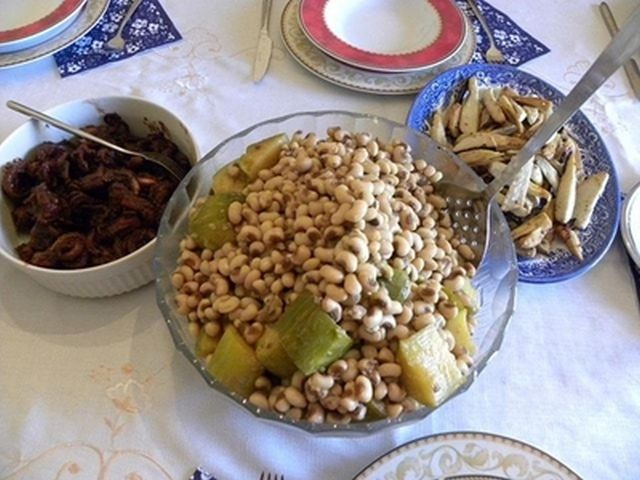
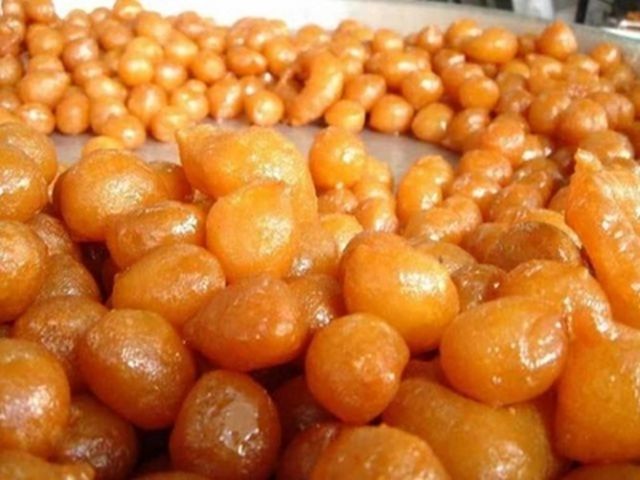
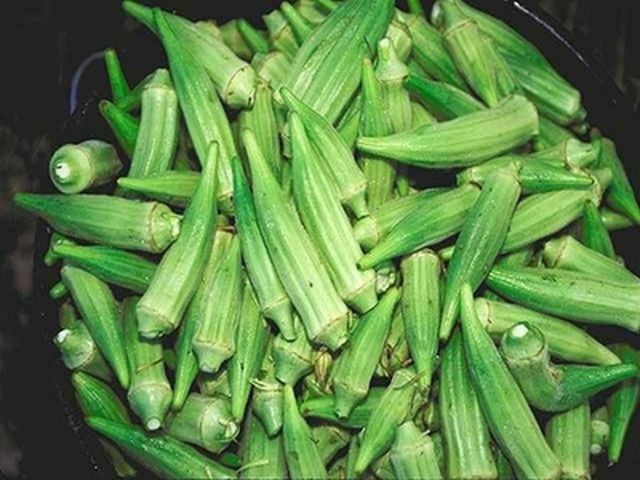
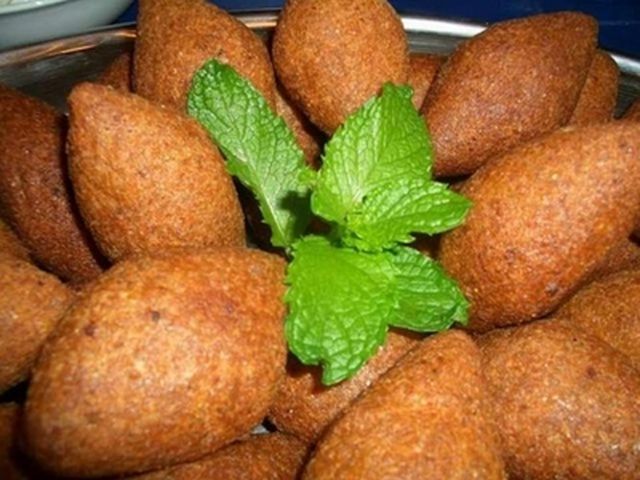
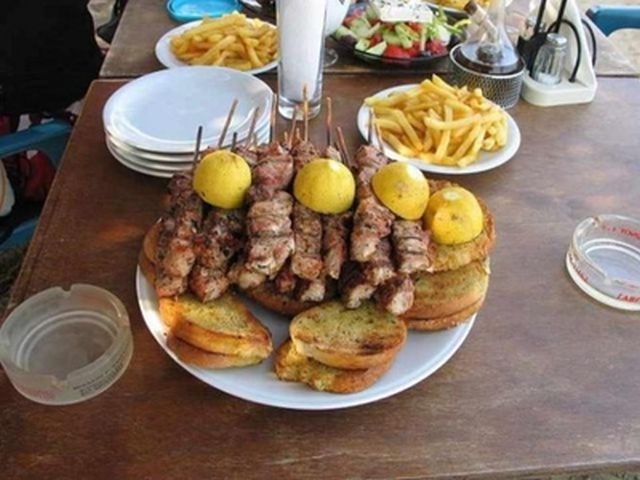
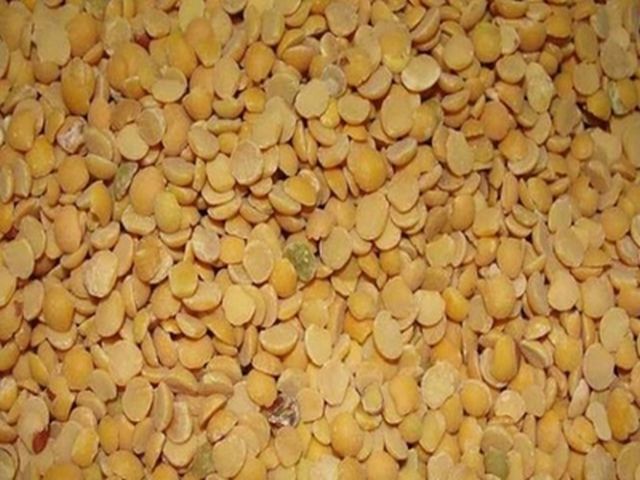
Τα πιο γνωστά κυπριακά πιάτα
Πιθανώς το πιο διάσημο κυπριακό πιάτο, η δημοτικότητα του Χαλούμι τώρα εκτείνεται σε πολλές χώρες σε όλη την Ευρώπη και τη Μέση Ανατολή. Λόγω του υψηλού σημείου τήξης του τυριού, διαθέτει τη σπάνια δυνατότητα να το τηγανίζετε ή να ψήνετε στη σχάρα, επαναπροσδιορίζοντας πλήρως τις προσδοκίες για το «τυρί ψητό». Ξεχωρίζει από την ήπια αλμυρή γεύση και την ελαστική υφή, και η λιχουδιά έχει γίνει αγαπημένη ανάμεσα σε χορτοφάγους και μη χορτοφάγους σε όλο τον κόσμο. Το τυρί παράγεται συνδυάζοντας ένα μείγμα κατσικίσιο και πρόβειο γάλα προτού τοποθετηθεί με πυτιά. Αυτή είναι μια ασυνήθιστη πρακτική λόγω της απουσίας βακτηρίων που παράγουν οξύ σε οποιοδήποτε μέρος της διαδικασίας. Το Halloumi μπορεί επίσης να σερβιριστεί δίπλα στο φρέσκο κομμένο σε φέτες καρπούζι και αυτό συνήθως τρώγεται ως ορεκτικό ή επιδόρπιο στην Κύπρο. Η κυπριακή ποικιλία του Dolma χρησιμοποιεί κιμά, ρύζι, κρεμμύδια, ντομάτες και μείγμα βοτάνων. Αυτή η γέμιση, η οποία στη συνέχεια τυλίγεται προσεκτικά σε φρέσκα φύλλα αμπέλου. Ένα αγαπημένο χωριό, το πιάτο αυτό μπορεί να βρεθεί σε όλη την Ελλάδα, την Τουρκία και τη Μέση Ανατολή. Τα κουπέπια συνήθως κατασκευάζονται σε μεγάλες παρτίδες και μπορούν να παγώσουν για να τα απολαύσετε αργότερα. Η πλήρωση των λαχανικών είναι κυπριακή παράδοση που εκτείνεται πέρα από τα φύλλα αμπέλου, με πιπεριές, ντομάτες, κρεμμύδια, κολοκυθάκια και ακόμη και λουλούδια κολοκυθάκια που μαγειρεύονται συχνά με τον τρόπο αυτό. Ξεχωρίζει από το διάσημο ελληνικό γεύμα γρήγορου φαγητού, το σουβλάκι της κυπριακής στυλ αποτελείται από μικρά κομμάτια από κρέας ψητό με κάρβουνο σε ένα σουβλάκι και ένα μεγάλο ποσό φρέσκιας σαλάτας. Το ψωμί πίτας που χρησιμοποιείται είναι λεπτότερο και μεγαλύτερο από την ελληνική έκδοση και συνήθως περιέχει μια τσέπη για να κρατά τα συστατικά, αντί να τυλίγει τη γέμιση με τον παραδοσιακό τρόπο. Το κρέας είναι συνήθως χοιρινό, αρνί ή κοτόπουλο. Ωστόσο, οι επιλογές για χορτοφάγους όπως το μανιτάρι και το χολούμι είναι επίσης επιλεγμένες. Οι σάλτσες που είναι δημοφιλείς με τους ελληνικούς σουβλάκους είναι ένα σπάνιο χαρακτηριστικό της κυπριακής έκδοσης. Στο νησί είναι συνήθως σερβίρονται με τετράγωνα λεμονιών, ένα πράσινο πιπέρι πράσινο πιπέρι και piccalilli στο πλάι. Η Σεφταλία είναι παραδοσιακός κυπριακός τύπος κρεβινέτας ή παρτίδας λουκάνικου. Η γέμιση συνήθως αποτελείται από μαϊντανό, κρεμμύδι, αλάτι, πιπέρι και είτε χοιρινό ή αρνί. Αυτό το γευστικό μίγμα είναι τυλιγμένο σε λίπος caul για να κάνει λίγο λουκάνικα. Το Sheftalia είναι παραδοσιακά ψημένο σε κάρβουνο για περίπου 30 λεπτά μέχρι να μαγειρευτούν, το τελικό αποτέλεσμα είναι ένα πλούσιο και καλά καρυκευμένο λουκάνικο. Επιλέγονται συχνά ως επιλογή κρέατος στα προαναφερθέντα Souvlaki pittas. Δημοφιλής στην Ελλάδα ως Pastitsio, η κυπριακή έκδοση είναι ένα εμβληματικό και αυθεντικό πιάτο ιδιαίτερα δημοφιλές κατά τις εκδηλώσεις του Πάσχα του νησιού. Μεγάλοι σωλήνες ζυμαρικών, σάλτσα μπεσαμέλ και χοιρινό κρέας είναι τα κύρια συστατικά που χρησιμοποιούνται. Λεπτές μπούκλες του τυριού anari ψεκάζονται συχνά στην κορυφή για να δώσουν μια τραγανή τραγάνισμα. Το πιάτο παρασκευάζεται συνήθως σε ένα μεγάλο φούρνο φούρνου. Οι μερίδες κόβονται σε κομψά τετράγωνα κομμάτια, επιτρέποντας στα στρώματα να φαίνονται στο φαγητό. Όταν σερβίρεται ως κύριο πιάτο, αυτή η κυπριακή λιχουδιά έρχεται συνήθως με μια πλευρά σαλάτας. Οι Λουκουμάδες κατασκευάζονται από βαθιές μπάλες τηγανίσματος, τους εμποτίζουν με μέλι και στη συνέχεια τους επωφελούνται γενναιόδωρα σε θρυμματισμένα καρύδια, σουσάμι ή κανέλα. Συχνά αναφέρονται ως ντόνατς μελιού, αυτές οι γλυκές απολαύσεις έχουν μια ελαφριά και σπογγώδη υφή και απολαμβάνουν καλύτερα κάτω από τη σκιά ενός δέντρου χωριού στη ζέστη ενός άγριου κυπριακού καλοκαιριού. Διατίθεται σε ειδικά καταστήματα καφέ σε όλη τη χώρα, το επιδόρπιο είναι τόσο νόστιμο που έχει προκαλέσει μεγάλη αμφισβήτηση ως προς το πού προέρχεται. Την Ελλάδα, την Τουρκία και την Αίγυπτο, που διακηρύσσουν κατηγορηματικά τα πιάτα. Το Okra συνδέεται συχνότερα με την ινδική κουζίνα, ωστόσο το λαχανικό είναι από καιρό δημοφιλές στην κυπριακή και ελληνική κουζίνα. Σε συνδυασμό με μια σάλτσα ντομάτας και κρεμμυδιού, στην Κύπρο το okra μαγειρεύεται μέχρι να μαλακώσει. Στη συνέχεια μεταφέρεται σε ένα τηγάνι που περιέχει κρέας, συνήθως αρνί, για να μπορέσει να απορροφήσει τις εύγευστες και αρωματικές γεύσεις. Τόσο θρεπτικό όσο και νόστιμο, αυτό το κυπριακό πιάτο είναι ιδανικό για να προσφέρει ζεστασιά σε μια κρύα χειμωνιάτικη μέρα. Κυπριακές Φακές με ρύζι είναι ένα χορτοφαγικό πιάτο που ξεχειλίζει με πρωτεΐνες και περιλαμβάνει τηγανητά κρεμμύδια, ρύζι και καστανές φακές. Τα κρεμμύδια πρώτα καραμελοποιούνται στο ελαιόλαδο πριν προστεθούν στο μαγειρεμένο ρύζι και φακές. Τα δημοφιλή πιάτα συχνά περιλαμβάνουν ελιές καθώς και τοπικές πατάτες της Κύπρου και νόστιμα καπνιστά λουκάνικα. Ένα βασικό κομμάτι σε κάθε κυπριακή κουζίνα, αυτό το απλό και υγιεινό πιάτο αποτελείται κυρίως από μαύρα φασόλια και σερβίρεται με λαχανικά, λάδι, αλάτι και λεμόνι. Τα φασόλια είναι χαμηλής περιεκτικότητας σε λιπαρά ενώ είναι υψηλά σε υδατάνθρακες και πρωτεΐνες. Όταν μεγαλώνουν, είναι εξαιρετικά ανεκτικοί στην ξηρασία, που σημαίνει ότι μπορούν να επιβιώσουν ακόμη και στην υπερβολική ζέστη των καυτών κυπριακών καλοκαιριών. Ο τόνος, το αγγούρι και η ντομάτα εξυπηρετούνται συχνά ως φρέσκα και γευστικά πλευρικά πιάτα με λαούι. Οι Koubes προέρχονται από την περιφέρεια του Levant και είναι βασικά μια κροκέτα σε σχήμα τορπιλών. Το εξωτερικό κέλυφος είναι κατασκευασμένο από βούτυρο και περιβάλλει μια γέμιση από κιμά με τη μέση ανατολική μπαχαρικά. Αυτά τα νόστιμα τσιμπήματα σερβίρονται με λεμονιές σφήνες, με το τραγούδι του φρούτου να αναδεικνύει πραγματικά τη γεύση πλήρωσης. Οι Koubes μπορούν να αγοραστούν σε γραφικά αρτοποιεία σε όλο το νησί. Πρόκειται για ένα δημοφιλές σνακ που μεταφέρει τους τρώγοντες σε αγορές της Μέσης Ανατολής με ένα μόνο τσίμπημα.
Demetris Andreou, δάσκαλος, Gymnasium Apostolou Paulou in Paphos
